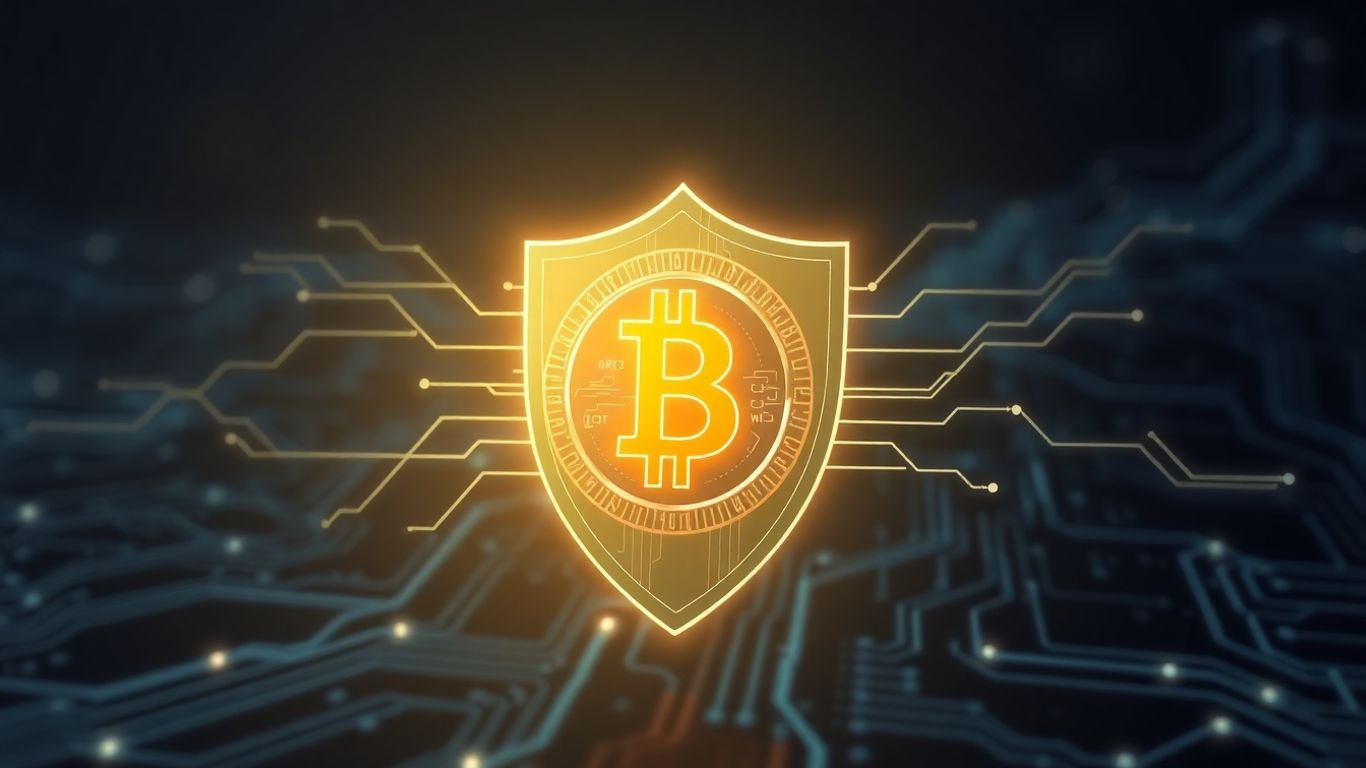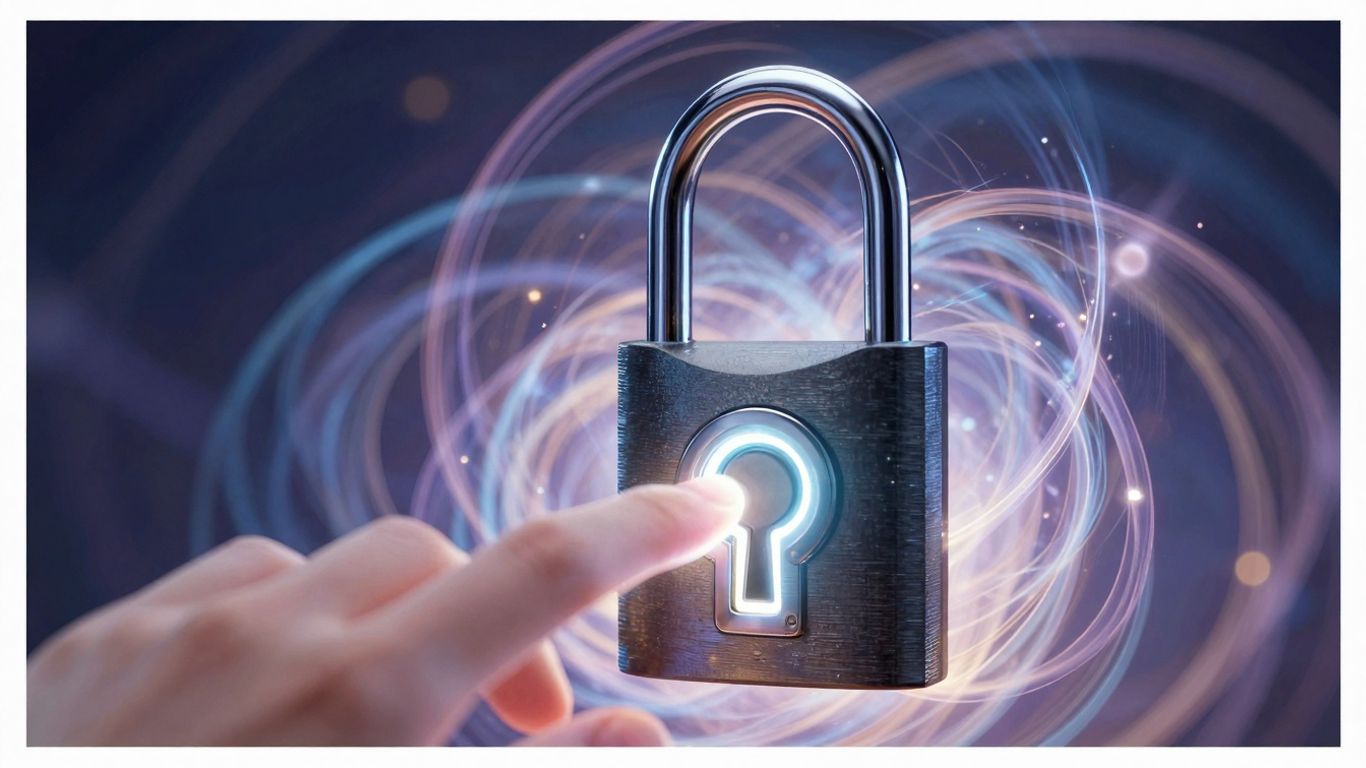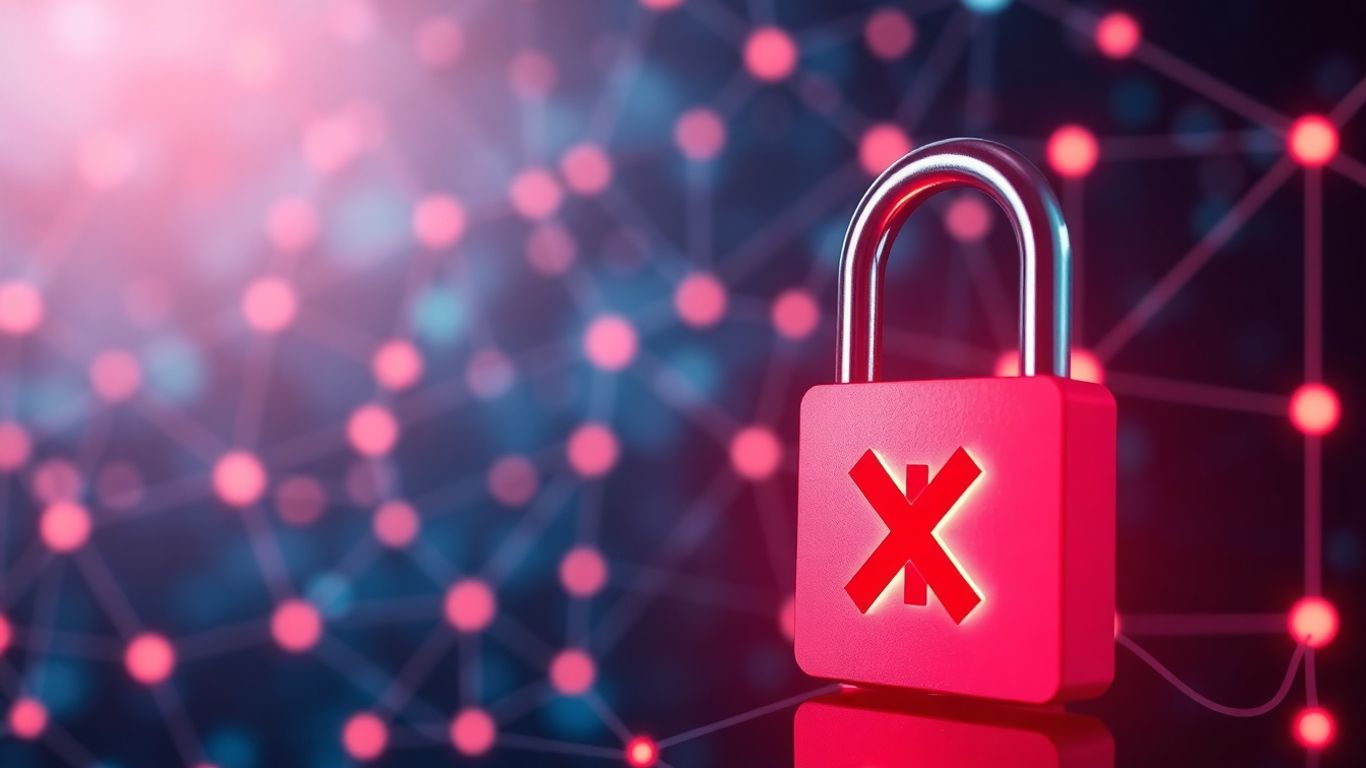[ newsletter ]
Stay ahead of Web3 threats—subscribe to our newsletter for the latest in blockchain security insights and updates.
Thank you! Your submission has been received!
Oops! Something went wrong. Please try again.
Use our ultimate rug pull scanner to protect your crypto investments. Learn how to identify and avoid common rug pull tactics with our comprehensive guide.





The crypto world is exciting, but let's be real, it's also got some shady corners. One of the biggest headaches for investors is the 'rug pull' – where project creators take everyone's money and just vanish. It's a total bummer and can cost people a lot. That's why knowing how to spot these scams is super important. We're going to look at how to protect yourself, and a rug pull scanner is a pretty big deal in all of this.

In the world of crypto, things move fast. Sometimes, too fast. You hear about a new coin, it looks like it's going to the moon, and you jump in. Then, suddenly, it's worth nothing. That's the basic idea behind a 'rug pull.' It's a scam where the people who create a crypto project get everyone excited, take your money, and then just disappear. The name comes from the feeling of having the rug yanked out from under you, leaving you with nothing.
A rug pull is a type of exit scam. The creators hype up a new token or project, often using social media and promising big returns. Once enough people have invested their money, the developers cash out, drain the project's funds, and vanish. The token they created becomes worthless overnight. It's not just a project failing; it's a deliberate act of deception.
Getting caught in a rug pull can be devastating. People lose their hard-earned money, sometimes their entire savings. Because crypto can be less regulated, especially in newer areas like decentralized finance (DeFi), it's easier for these scams to happen. The losses can add up to billions of dollars across the board, leaving many investors feeling betrayed and broke.
These scams aren't all the same. They can happen in a few different ways:
The core of a rug pull is deception. Developers create an illusion of a real project, often with slick marketing, only to betray trust by taking investor funds. A lack of transparency is often the biggest sign.
It's a tough situation, and knowing these tactics is the first step to protecting yourself.
So, you've heard about rug pulls, and now you're wondering how to actually spot one before your crypto disappears. That's where a rug pull scanner comes in handy. Think of it like a security guard for your digital assets. You give it the address of a token you're looking at, and it goes to work, checking out the code and looking for anything suspicious. It's not foolproof, but it's a really good first step to avoid getting scammed. These tools can analyze the potential risks associated with various smart contracts, tokens, and NFTs across popular chains like Ethereum and BNB Chain.
A rug pull scanner works by automatically auditing a token's smart contract. You typically just need the contract address of the token you're interested in. This address is usually available on the project’s official website or social media channels. You can also find the token contract address by searching for the project via a crypto market page and then clicking on a link to its blockchain explorer, like Etherscan. Once you have that address, you paste it into the scanner's search bar. The scanner then analyzes the token's smart contract for potential problems, providing you with a detailed report on its safety.
When using a scanner, you'll want to pay attention to specific issues it flags. These are the common red flags that indicate a probable rug pull:
Always remember that a scanner is a tool to help you, not a guarantee. You still need to use your own judgment and do your own research. Don't just blindly trust the scanner's score.
The contract address is the unique identifier for a token's smart contract on the blockchain. It's like a digital fingerprint. This address is the key piece of information a rug pull scanner needs to begin its analysis. Without it, the scanner wouldn't know which set of code to examine. You can usually find this address on the project's official website or by looking up the token on a blockchain explorer like Etherscan or BscScan. Double-checking this address against official sources is always a best practice, as many tokens might share similar names but have different contract addresses.
So, you've heard about rug pulls, and now you're wondering how to actually spot one before your crypto disappears. That's where a rug pull scanner comes in handy. Think of it like a security guard for your digital assets. You give it the address of a token you're looking at, and it goes to work, checking out the code and looking for anything suspicious. It's not foolproof, but it's a really good first step to avoid getting scammed. The sheer volume of these scams highlights the need for better protective measures, like using a rug pull scanner.
The first thing you'll need to get started with a scanner is the token's contract address. This is a unique identifier for the smart contract that governs the token on the blockchain. You can usually find this on the project's official website, their social media channels, or by searching for the token on a crypto market data site and looking for a link to its blockchain explorer. This address is the key that unlocks the scanner's analysis. Once you have it, you'll typically paste it into the scanner's search bar.
Before you even get to the scanner, understanding blockchain explorers is a good idea. Think of them as public records for all crypto transactions. Sites like Etherscan (for Ethereum) or BscScan (for Binance Smart Chain) let you see a token's contract code, its transaction history, and who holds the most tokens. While scanners automate much of this, knowing how to look around an explorer yourself can give you extra insight. It’s a bit like knowing how to read a map before you use a GPS.
Once you have the contract address, plugging it into the rug pull scanner is usually pretty simple. You'll find a search bar or an input field on the scanner's website. Paste the address there and hit the analyze button. The scanner will then start digging into the smart contract's code and its on-chain activity. It's looking for specific patterns and functions that are common in scam projects. This process can take a few moments, depending on the complexity of the contract and the scanner's workload. It's a quick way to get a preliminary safety check on a token before you consider investing. You can find contract addresses on sites like CoinMarketCap or CoinGecko, which often link directly to the blockchain explorer for each token.
So, you've run the scanner on a token's contract address, and now you've got a report in front of you. What does it all mean? It's not just a bunch of numbers and warnings; it's your guide to understanding the potential risks. Think of this report as a diagnostic tool for your crypto investment. It breaks down complex smart contract code into understandable insights, helping you see what might be lurking beneath the surface.
When you're looking at the scanner report, some things are more serious than others. For instance, if the contract owner hasn't given up their control (ownership not renounced), that's a major red flag. It means they can still alter the rules of the token at any time, which is a big deal. Another big one is the presence of minting functions, which let developers create an unlimited supply of tokens, basically printing money and destroying the value of existing tokens. Also, watch out for extremely high transfer fees, especially if they can be set to 100%. That means if you try to sell or move your tokens, you could lose them all. Finally, be wary of contracts that seem designed to trap you, like honeypots, where you can send money in but never get it out.
Here's a quick rundown of common warning signs:
One of the most critical pieces of information in the report is the ownership status of the smart contract. If the developers have not renounced ownership, they retain the ability to modify the contract's parameters. This could include changing tax rates, pausing trading, or even minting new tokens out of thin air. This is arguably the single biggest indicator of a potential rug pull. A renounced contract means the developers have permanently given up control, making it much harder for them to execute a scam.
Pay close attention to the details regarding transfer fees and minting capabilities. Some contracts are programmed with built-in taxes on every transaction. While a small fee (e.g., 1-5%) might be acceptable for project funding, extremely high fees, or fees that can be arbitrarily set by the owner, are a massive red flag. Similarly, the presence of a minting function allows for the creation of new tokens. If this function is accessible to the developers, they could flood the market with new tokens, drastically devaluing existing ones and making off with the profits. You can use a tool like this free crypto token scanner to check these details.
A honeypot is a type of scam contract designed to trick users into sending funds, but then prevents them from withdrawing their assets. The scanner report should flag if a contract exhibits honeypot characteristics. This often involves analyzing the contract's logic to see if there are conditions under which a user's tokens would become permanently locked or unsellable. It's like a digital trap, and the scanner is your early warning system.
The scanner report is not a crystal ball, but rather a sophisticated checklist. It highlights potential vulnerabilities and suspicious activities based on the contract's code and on-chain data. Always cross-reference the scanner's findings with your own research and common sense.
So, you've run the scanner, and it gave you a green light, or maybe a few yellow flags. That's great! But honestly, a scanner is just one piece of the puzzle. You can't just blindly trust it and walk away. Think of it like checking the weather before a hike – it's important, but you still need to pack the right gear and know the trail.
This is where you become a detective. What are people in the project's community channels saying? Are the developers actually talking to people, answering questions, and being upfront about what's going on? A project that hides behind vague answers or has a community full of bots is a big warning sign. Look for genuine discussions, constructive criticism, and developers who seem to be genuinely involved. A truly transparent project will have nothing to hide.
While a scanner checks the code, a professional security audit is like a deep-dive inspection by experts. These audits look for vulnerabilities that even automated tools might miss. You want to see if the project has had its smart contracts audited by reputable firms. Check if they've made the audit reports public. If they have, read them! See what issues were found and, more importantly, how they were fixed. A project that skips audits or hides the results is definitely not playing fair.
Beyond just looking at the code, pay attention to the people behind the project. Are they doxxed – meaning, have they revealed their real identities? While not always a deal-breaker, it adds a layer of accountability. What's their track record? Have they worked on other successful (and honest) projects before? You can often find this information on their website, social media, or even through blockchain analysis if they've been active elsewhere. It's about building a picture of who you're trusting with your money.

The fight against crypto scams, especially rug pulls, is always evolving. As scammers get more creative, so do the tools and strategies we use to protect ourselves. Looking ahead, we can expect a few key developments that should make the crypto space a bit safer for everyone.
Artificial intelligence is poised to become a much bigger player in spotting suspicious activity. Imagine AI that doesn't just look at past scam patterns but can analyze real-time data streams from blockchains. It could identify unusual transaction volumes, sudden liquidity drains, or strange contract interactions as they happen. This proactive detection could flag potential rug pulls before they even impact investors. AI models will likely get better at recognizing new scam tactics as they emerge, making it harder for scammers to stay ahead.
As rug pulls continue to cause significant financial losses, governments and financial regulators are paying closer attention. We're likely to see more rules and guidelines for cryptocurrency projects. This could mean stricter requirements for project teams to reveal their identities, undergo financial audits, and provide clear roadmaps. While some might see this as a hindrance, it's really about creating a more accountable and secure environment for crypto investments. Think of it like the regulations that govern traditional stock markets; they're there to protect investors.
One of the most promising trends is increased collaboration. We're seeing more shared watchlists and decentralized alert systems where users can report and flag suspicious projects. When people pool their knowledge and observations, it creates a powerful collective defense. Many projects now have dedicated channels where community members can discuss potential risks, share findings from their own research, and warn others. This shared vigilance is a significant barrier against scams, as it’s much harder for a rug pull to go unnoticed when a whole community is watching. The goal here is to move from a reactive stance, where we only deal with scams after they happen, to a proactive one. By using smart technology and working together, we can spot the warning signs much earlier and prevent a lot of the damage before it even occurs. It’s about building a safer environment for everyone involved in crypto.
So, the crypto world can feel like the Wild West sometimes, and yeah, scams like rug pulls are definitely a thing. It's easy to get caught up in the hype, but it doesn't have to end badly for you. By doing your own homework – like checking out who's really behind a project and if their code has been looked at by others – you can dodge a lot of potential trouble. Tools like scanners are super helpful for spotting those shady signs, like if a project owner can just change the rules whenever they feel like it. Plus, staying connected with other people in the crypto space and sharing what you learn is just smart. It’s all about being aware and using the tools and info available to protect your hard-earned cash. Keep learning, stay sharp, and you'll be much better equipped to handle whatever the crypto market throws your way.
Imagine you invest in a cool new digital coin. A rug pull happens when the people who made the coin suddenly disappear with everyone's money, leaving the coin worth nothing. It's like they pull the rug out from under you!
Look out for signs like promises of crazy high returns or anonymous teams. If a project doesn't clearly explain its plans or who is behind it, be extra careful. Always do your research!
A rug pull scanner is like a security guard for your crypto investments. You give it the address of a token, and it checks the code for anything suspicious, helping you spot potential scams before you invest.
Some big warnings include if the project creators can still change the contract rules, if a few people hold way too many tokens (high dump risk), or if the contract allows making endless new tokens (minting functions).
No, a scanner is a helpful tool, but it's not a guarantee. You still need to use your own judgment and do your own research. Don't just trust the scanner's score without thinking.
Always check if the project team is open about who they are and their plans. Look for security audits from trusted companies. Also, see if the project has a strong, active, and transparent community that asks good questions.


